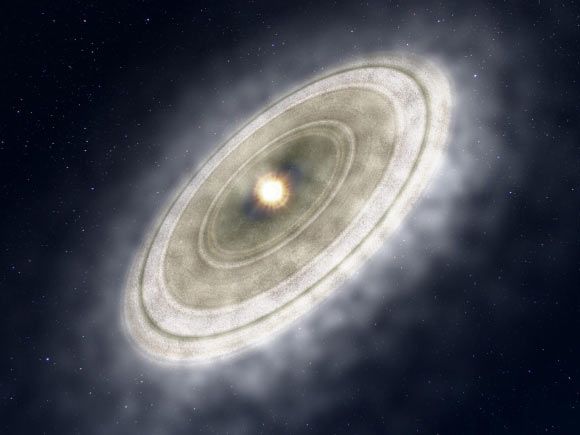
An artist’s impression of the gas-rich debris disk around 49 Ceti. Image credit: NAOJ.
Furthermore this cloud contains a huge amount of atomic carbon according to follow-up observations with ASTE (Atacama Submillimeter Telescope Experiment), a ten metre radio telescope in Chile operated by the National Astronomical Observatory of Japan. There is so much atomic carbon that one can detect carbon-13 in the cloud, the first time this has ever been done. The amount of carbon-13 is 1% of the amount of carbon-12 (the normal isotope of carbon). Japanese researchers believe that all this carbon either stems from the original gas around the star (but 49 Ceti is too old for that to be correct) or it is the result of numerous comets smashing into each other, but a colossal number of collisions is needed for this theory to work. Perhaps the age of 49 Ceti has been miscalculated and it is in fact much younger. In any event, we have yet another good example of a planetary system in the making thanks to ALMA.
To locate 49 Ceti, draw a line between Procyon and Rigel and go about as far again. In a barren sky, you should be able to find Tau Ceti (mag. 3.5) and 49 Ceti is just to the right (west) of Tau Ceti, just underneath nearby 50 Ceti (mag. 5.4). Be warned however that is never more than about 23 degrees above the horizon.
